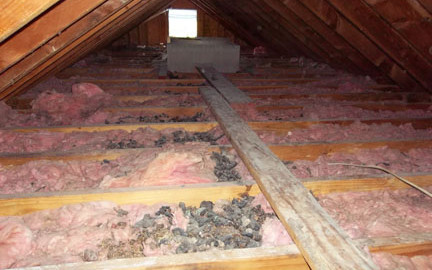Why You Need To Remove Feces After Raccoons Were Removed From Your Attic

Cleaning up after successfully removing raccoons from your attic is a headache and not a job for the faint-hearted. It is tempting to seal off the attic and forget the coons ever existed. This is a bad idea and could lead to serious health problems. It is absolutely necessary that you remove feces after evicting raccoons from your attic.
Dangers of Raccoon Feces in the Attic
Odour is definitely a concern which may spread to the rest of the house through your HVAC system. Raccoons tend to defecate at a designated spot or area known as a raccoon latrine. The stench can become overwhelming over time and seal the attic off may not help with the issue.
A more serious concern is the health risk associated with raccoon feces. The latrine is a fertile breeding ground for multiple potential diseases and infections including;
Giardia: This can contaminate surfaces and water and then transmitted to humans. Its symptoms include dehydration, diarrhea, nausea and abdominal cramps.
Salmonella: This bacterium can stay dormant for prolonged periods of time and become active when introduced to a human or pet host. Symptoms include abdominal pain, fever and severe diarrhea.
Roundworm: Roundworms are introduced to humans or pets through ingesting contaminated food or water. Roundworms can find their way into the brain and have the potential to cause brain damage or death. Children and people with developmental needs are most at risk of roundworms because of their tendency to put foreign objects in the mouth.
Leptospirosis: Is bacteria found in raccoon urine. The disease is mainly spread by drinking contaminated water. Symptoms include body aches and pain, diarrhea, vomiting, fever and headaches. Severe infections can lead to kidney failure and bleeding lungs.
Apart from the risk of contracting a serious disease, raccoon feces contain pheromones which can attract other wildlife to your home.
How to Remove Raccoon Feces
First, inspect the entire house to ensure that you have found all the raccoon latrines.
Next, wear protective gear. Wear disposable rubber gloves, a particle rated mask (to prevent inhaling airborne eggs and viruses) and plastic bags or booties over your shoes.
Spray the feces lightly with a mixture of equal part bleach and water in a spray bottle and allow it to sit for a few minutes.
Pick up the feces carefully with a shovel and place inside a heavy-duty bag. Seal the bag tightly, place in a second bag and seal before disposing of in a secure garbage can.
Save yourself the trouble and hire a professional raccoon removal service in Ontario to do the job for you. This is a delicate and potentially dangerous undertaking. The professional will also help you to restore your attic and to seal the house permanently to avoid a future infestation.